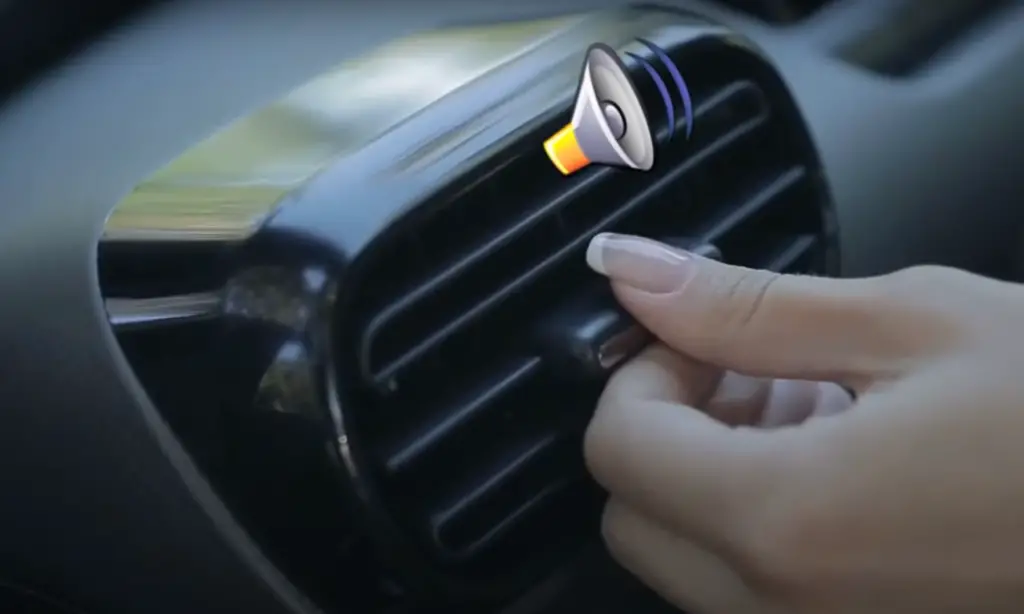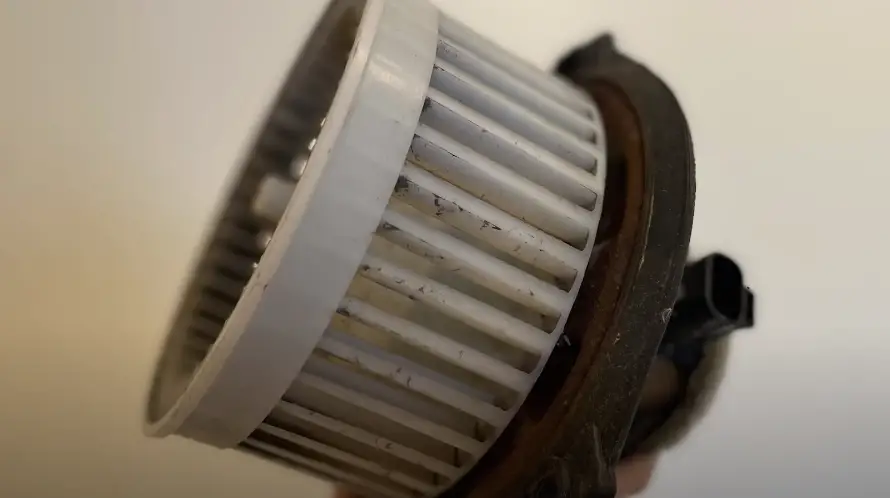Symptoms of a failing blower motor include weak or inconsistent airflow, no airflow at all, unusual noises like rattling or grinding, and a burning smell from the vents. These issues can arise from wear and tear, overheating, or debris in the system. Addressing these symptoms early by checking related components or replacing the blower motor can restore proper function and comfort.
The blower motor is a critical component of your vehicle’s HVAC (Heating, Ventilation, and Air Conditioning) system. It is responsible for pushing air through the vents, allowing you to control the cabin temperature and ventilation. When the blower motor starts to fail, it can lead to a variety of issues that affect your comfort and safety while driving.
In this blog post, we will explore the symptoms of a failing blower motor, the potential causes behind these issues, and what steps you can take to address the problem.
Contents
Blower Motor Going Bad Symptoms
A failing blower motor can present several symptoms, ranging from minor annoyances to significant issues that can impair your ability to control the cabin environment. Recognizing these symptoms early can help you address the problem before it leads to more extensive repairs.
1. Weak or Inconsistent Airflow
One of the most common symptoms of a failing blower motor is weak or inconsistent airflow from the vents. If you notice that the air coming from the vents is not as strong as it used to be, or if it fluctuates in intensity, the blower motor may be struggling to operate effectively.
- Explanation: Over time, the blower motor’s internal components, such as the brushes, bearings, or windings, can wear out, leading to reduced efficiency. This can result in weaker airflow, even when the blower motor is set to its highest speed.
- Solution: If the airflow is consistently weak, the blower motor may need to be replaced. However, before replacing it, check the cabin air filter and the blower motor resistor, as these components can also cause weak airflow.
2. No Airflow from the Vents
Another clear sign of a bad blower motor is when there is no airflow from the vents, regardless of the fan speed setting. This can be particularly problematic in extreme weather conditions, as it prevents the HVAC system from heating or cooling the cabin.
- Explanation: If the blower motor fails completely, it will no longer be able to push air through the vents. This can be due to a complete burnout of the motor’s electrical components or a mechanical failure within the motor itself.
- Solution: When there is no airflow, start by checking the fuse and the blower motor resistor. If these components are functioning properly, the blower motor itself is likely the issue and will need to be replaced.
3. Unusual Noises from the HVAC System
A failing blower motor may produce unusual noises when it is running. These noises can include rattling, squeaking, grinding, or a humming sound that varies with the motor’s speed.
- Explanation: Noises can be caused by several issues, such as worn bearings, a damaged fan blade (also known as the squirrel cage), or debris caught in the blower motor assembly. As the motor deteriorates, it may start to produce these sounds, indicating that it is struggling to operate.
- Solution: If you hear unusual noises from the HVAC system, inspect the blower motor and its surrounding components for signs of damage or debris. Depending on the severity of the issue, you may need to clean, repair, or replace the blower motor.

4. Blower Motor Only Works on Certain Speeds
If the blower motor only works on certain speeds, this can indicate a problem with the blower motor itself or the blower motor resistor. For example, you might find that the blower motor operates only on the highest speed setting but not on lower speeds.
- Explanation: The blower motor resistor controls the voltage that reaches the blower motor, allowing it to operate at different speeds. If the motor is failing, it may only be able to operate when receiving the maximum voltage, which is why it might only work on the highest setting.
- Solution: Test the blower motor resistor first, as it is more commonly the cause of this issue. If the resistor is functioning properly, the problem likely lies with the blower motor, which may need to be replaced.

5. Burning Smell from the Vents
A burning smell coming from the vents when the blower motor is running is a serious symptom that should not be ignored. This smell can indicate overheating or burning of the motor’s internal components.
- Explanation: The blower motor contains electrical windings and other components that can overheat if the motor is failing. A burning smell can also be caused by debris in the motor assembly or a short circuit in the motor’s wiring.
- Solution: If you notice a burning smell, turn off the HVAC system immediately and inspect the blower motor. Continuing to run a failing motor can cause further damage or even lead to a fire. The motor should be replaced if it is overheating or damaged.
6. Blower Motor Does Not Respond to Controls
If the blower motor does not respond at all when you adjust the fan speed or turn on the HVAC system, it could indicate a complete failure of the motor or an issue with the control module.
- Explanation: A non-responsive blower motor could be due to a complete electrical failure within the motor, a problem with the control module, or an issue with the wiring that connects the motor to the rest of the HVAC system.
- Solution: Check the fuse, wiring, and control module for any signs of damage or failure. If these components are in good condition, the blower motor itself may need to be replaced.
Causes of Blower Motor Going Bad
Understanding the common causes of blower motor failure can help you take preventive measures to extend the life of your vehicle’s HVAC system. Some of the main causes include:
1. Wear and Tear
Like any mechanical component, the blower motor can wear out over time due to regular use. The internal components, such as the brushes, bearings, and windings, can degrade with age, leading to reduced performance and eventual failure.
2. Overheating
The blower motor can overheat if it is overworked, such as when it is running continuously at high speeds or if there is a blockage in the HVAC system that restricts airflow. Overheating can cause the motor’s windings to burn out, leading to failure.
3. Debris in the HVAC System
Debris, such as leaves, twigs, or dirt, can enter the HVAC system and become lodged in the blower motor assembly. This debris can damage the motor’s fan blades or cause the motor to overheat, leading to failure.
4. Electrical Issues
Electrical problems, such as a short circuit, faulty wiring, or a failing blower motor resistor, can cause the blower motor to receive incorrect voltage or current. This can lead to inconsistent performance, overheating, or complete failure of the motor.
Diagnosing a Failing Blower Motor
Diagnosing a failing blower motor involves a combination of symptom observation, visual inspection, and electrical testing. Here’s a step-by-step guide to diagnosing the issue:
Step 1: Observe Symptoms
Pay attention to the symptoms your vehicle is displaying, such as weak airflow, unusual noises, or a burning smell. These symptoms can help you identify whether the blower motor is the likely culprit.
Step 2: Inspect the Blower Motor
Locate the blower motor, typically under the dashboard on the passenger side, and visually inspect it for signs of damage, such as burned or melted components, debris, or worn fan blades.
Step 3: Test the Blower Motor with a Multimeter
Use a multimeter to test the electrical resistance of the blower motor’s circuits. Compare the readings to the specifications in your vehicle’s service manual. If the readings are outside the specified range, the motor is likely faulty.
Step 4: Check Related Components
Inspect related components, such as the blower motor resistor, wiring, and fuses, to ensure they are functioning properly. A failure in one of these components can cause similar symptoms to a failing blower motor.
Conclusion
A failing blower motor can significantly impact your vehicle’s HVAC system, leading to issues such as weak or inconsistent airflow, no airflow at all, unusual noises, and even burning smells. Recognizing these symptoms early is crucial for maintaining comfort and safety while driving.
Whether it’s due to wear and tear, overheating, or debris, addressing blower motor problems promptly can prevent further damage and costly repairs. By staying vigilant and performing regular maintenance, you can ensure your HVAC system operates smoothly, keeping you comfortable in all weather conditions.